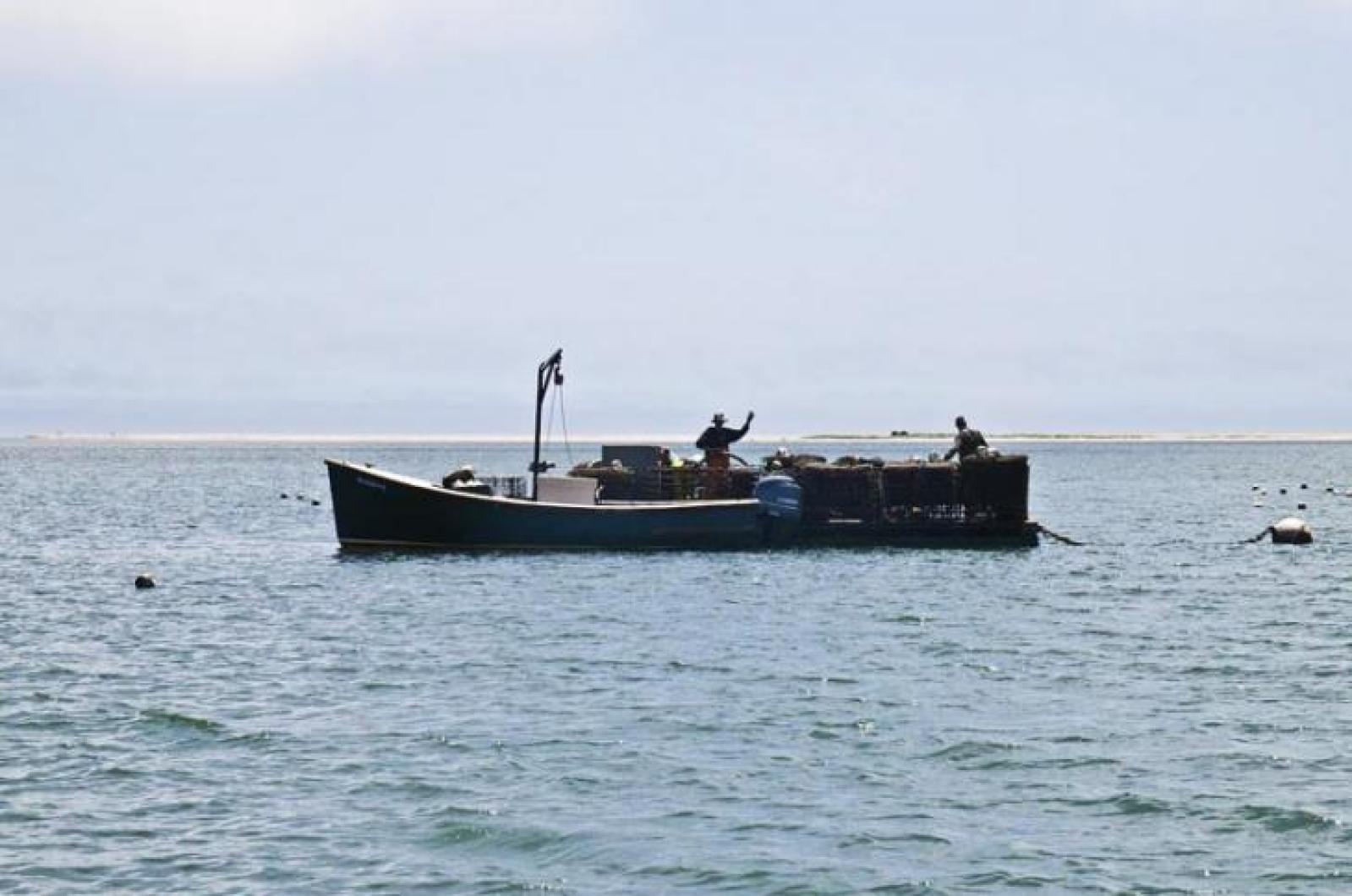For the second year in a row, Massachusetts will revise guidelines for handling and transporting oysters in an effort to reduce the incidence of illness from Vibrio parahaemolyticus, a bacterial pathogen that can cause illness in humans.
The state Vibrio control plan, begun in 2011, was expanded in 2012 in response to Vp cases outside of eastern Cape Cod. In response to increased cases in 2013, it was revised for this year’s harvest, which ended in October. The state hopes to submit a final plan for 2015 to the Food and Drug Administration this winter.
A public comment period preceding the revision is now open. Another comment period will open following the first draft, which is expected in December.
Last week officials from the Department of Public Health and the Division of Marine Fisheries met with about a dozen people at the Vineyard Haven Library to gather feedback for the revised plan. Several oyster farmers and wholesalers, along with members of local boards of health, attended.
DMF biologist Chris Schillaci, who facilitated the meeting, said the revised plan would likely be more restrictive, although some parts may stay the same. Topics identified for review include procedures for cooling and transporting oysters, proper training and improved enforcement. The plan must also meet certain minimum requirements of the National Shellfish Sanitation Program.
Katama Bay was closed to oyster harvesting for one week this September following four confirmed cases of Vp that were traced to the bay. Last year the bay was closed for about three and a half weeks after being linked to cases of Vp.
There were 35 reported cases in the state this year, although only 20 were related to shellfish consumption, and only 11 were traced to a single harvest area.
Katama Bay was identified in four of the 11 traceable cases, despite the fact that Island farmers and wholesalers were in compliance with the 2014 plan. “I didn’t have a single issue with compliance when I came out here,” Mr. Schillaci said. “Industry buy-in was huge. You all did a great job and we want to keep this fishery going.”
Mr. Schillaci said a relatively large number of Vp cases have been traced to Katama Bay and Duxbury Harbor, south of Boston, although neither area is an especially large producer. He said the state was looking at possible causes. Both areas are subtidal zones with sediment disruption.
None of the farmers or wholesalers at the meeting reported any serious trouble in complying with the 2014 plan, although some wholesalers reported that having to keep ice in their coolers often made a mess in their vehicles or facilities.
Mr. Schillaci said the FDA’s vibrio control plan originally focused on the Gulf Coast, so it needed further refinement for use in state fisheries. He said Vp had not been a problem in the northeast until three or four years ago.
Mr. Schillaci said he still sometimes encounters longtime oyster farmers who are unaware of the basic requirements for shellfishing. He said the state was considering mandatory Vp training for all farmers.
The main challenge is keeping the oysters cool, since Vp, which occurs naturally, is more abundant in warmer temperatures. If more than four cases of Vp are confirmed within 30 days and traced back to an area, that area will be closed to farming.
Edgartown shellfish constable Paul Bagnall, who attended the meeting, didn’t think it was fair for Katama Bay to carry so much responsibility for Vp cases, since oysters often pass through several hands before ending up on someone’s plate.
Citing one recent example, he said: “When oysters are allowed to leave the Vineyard and go through three dealers in two different states, come back to the Vineyard 12 days later and be served as a raw product, I don’t think that’s fair to put that case on Katama Bay.” He was unaware of any official expiration date for raw oysters.
Eric Hickey, head vibrio plan coordinator for the DPH, said extended travel times for oysters were a national concern. “We see this often,” he said. “Somebody will happily pay more for something — the transportation costs of shipping this thing around the northeast region — just so that they don’t have to deal with extra paperwork.”
Beginning in 2011, federal regulations required dealers to provide records showing that the shellfish were transported at 45 degrees or less and in good condition. If shellfish are shipped without being cooled to 50 degrees or less, a record saying so must accompany the shipment, along with a device for controlling temperature, but only if the time of travel exceeds four hours. “That’s kind of complicated and a lot to remember for industry,” Mr. Hickey said.
Massachusetts requires that all oysters be 50 degrees or cooler during shipment, which helps simplify the process.
During a Vp investigation, the state is required to investigate all carriers along the route of the oysters, tracing them back to the harvest area. If the oysters travelled out of state, then the other states are contacted to continue the investigation.
Other concerns included the lack of regulation surrounding the shucking of oysters at catering events and the need for better communication prior to a closure. Many people anticipated the closure this summer following four confirmed Vp cases within 35 days, but were not officially notified until the night before.
Closures are communicated by the state through the selectmen, boards of health, shellfish constables and the nonprofit Massachusetts Aquaculture Association.
“We will continue to refine and improve the way we deal with that,” Mr. Schillaci said.
Feedback on the 2014 Vibrio control plan may be sent to vibrio.feedback@state.ma.us.







Comments
Comment policy »